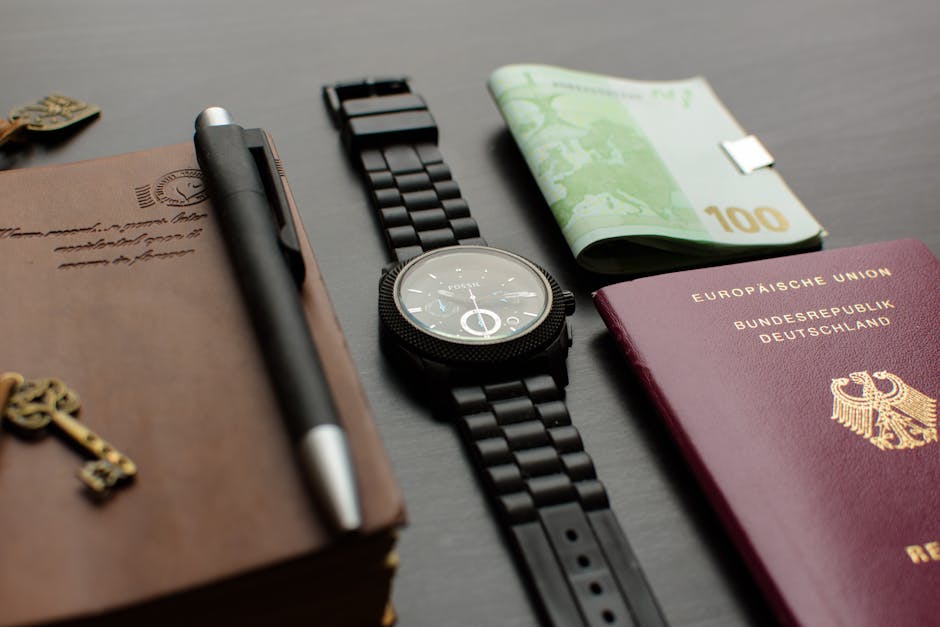Cycling the Shimanami Kaido: An Island Hopping Adventure on Two Wheels

Cycling the Shimanami Kaido: An Island Hopping Adventure on Two Wheels
Hey there, fellow adventurers! Let me tell you about one of the most incredible experiences of my life: cycling the Shimanami Kaido. Imagine yourself gliding along perfectly paved roads, the salty sea breeze kissing your face, and stunning island vistas unfolding around every bend. Sounds idyllic, right? Well, it is! I'm going to share everything you need to know to plan your own unforgettable cycling journey across this Japanese paradise.
What is the Shimanami Kaido? A Bridge Between Islands

The Shimanami Kaido, simply put, is a cyclist's dream come true. It's a 70-kilometer (about 43.5 miles) network of bridges and roads connecting six islands in the Seto Inland Sea, stretching from Onomichi in Hiroshima Prefecture to Imabari in Ehime Prefecture. Think of it as a chain of emerald islands linked by majestic spans of steel and concrete, all designed to make cycling a joy.
But it's more than just a route. It's an experience. It's about immersing yourself in the laid-back island life, savoring delicious local cuisine, and discovering hidden temples and stunning beaches tucked away from the hustle and bustle of Japan's major cities. I promise you, it's unlike anything you've ever experienced.
Why Choose the Shimanami Kaido for Your Cycling Adventure?

There are countless cycling routes around the world, so why should you choose the Shimanami Kaido? Here are a few compelling reasons that made me fall in love with it:
- The Scenery: I've already mentioned it, but it bears repeating. The views are simply breathtaking. From panoramic ocean vistas to lush citrus groves and charming fishing villages, every kilometer offers a new and captivating scene.
- The Infrastructure: This is where the Shimanami Kaido truly shines. The dedicated cycling paths are well-maintained, clearly marked, and mostly separated from car traffic, making it safe and enjoyable for cyclists of all levels.
- Accessibility: Getting to and from the Shimanami Kaido is relatively easy, with good train connections to both Onomichi and Imabari from major cities like Hiroshima, Osaka, and Tokyo.
- Island Hopping Fun: Each island has its own unique character and attractions. You can explore ancient temples, relax on beautiful beaches, sample local delicacies, and soak up the laid-back island atmosphere.
- Cycling Culture: The Shimanami Kaido is incredibly bike-friendly. You'll find bike rental shops, repair stations, and rest stops along the route, making it easy to deal with any unexpected issues. The locals are also incredibly welcoming and supportive of cyclists.
- A Challenge for All Levels: While the main route is relatively flat and easy, there are optional detours with steeper climbs for those seeking a more challenging workout.
Planning Your Shimanami Kaido Cycling Trip: Key Considerations

Okay, so you're intrigued, right? Let's dive into the practical details of planning your Shimanami Kaido adventure. Here are some key things to consider:
1. Best Time to Go
The best time to cycle the Shimanami Kaido is generally during the spring (April-May) or autumn (October-November). The weather is mild and pleasant, with fewer crowds than the peak summer season. Summer (June-August) can be hot and humid, and typhoon season can bring heavy rain and strong winds. Winter (December-February) can be cold and windy, but it's still possible to cycle if you're prepared for the conditions. I went in late October, and the weather was perfect – sunny days and cool evenings.
2. Duration: How Many Days Do You Need?
You can technically cycle the entire Shimanami Kaido in a single day if you're an experienced cyclist and want to push yourself. However, I highly recommend taking at least two days to fully appreciate the experience. This allows you to stop and explore the islands along the way, relax on the beaches, and savor the local cuisine. Three days would be even better, giving you more time to delve deeper into each island's unique offerings.
I personally took three days and two nights, and it felt like the perfect pace. I never felt rushed, and I had plenty of time to explore the islands, take photos, and simply soak in the atmosphere.
3. Choosing Your Starting Point: Onomichi vs. Imabari
You can start your journey from either Onomichi or Imabari. Both have their pros and cons:
- Onomichi: This charming port city has a more traditional Japanese feel, with narrow streets, historic temples, and a vibrant culinary scene. It's a great place to start your journey and immerse yourself in Japanese culture. I started in Onomichi and loved exploring its hidden alleys and sampling its famous ramen.
- Imabari: Imabari is known for its towel industry and its impressive castle. It's a more modern city than Onomichi, but it still has plenty to offer. Starting in Imabari allows you to end your journey in the more traditionally Japanese Onomichi.
Ultimately, the choice is yours. Consider your travel plans, interests, and preferred starting point when making your decision.
4. Bike Rental Options: Choosing the Right Ride
You have several options for renting a bike on the Shimanami Kaido:
- Giant Store Onomichi/Imabari: These stores offer high-quality road bikes, mountain bikes, and e-bikes. They're a great option if you're looking for a premium cycling experience. They also offer one-way rentals, allowing you to drop off your bike at a different location.
- Shimanami Japan Rental Cycle: This is the most popular and budget-friendly option. They have rental stations at various locations along the route, offering a range of bikes, including city bikes, cross bikes, and e-bikes. You can also return the bike at a different location for a small fee.
- Hotels and Guesthouses: Some hotels and guesthouses offer bike rentals to their guests. This can be a convenient option if you're staying at one of these establishments.
Pro Tip: I highly recommend renting an e-bike, especially if you're not an experienced cyclist or if you plan to tackle some of the steeper detours. The e-bike will make the climbs much easier and allow you to enjoy the scenery without getting too exhausted. I rented an e-bike and it was a game-changer!
When choosing your bike, consider the following factors:
- Your cycling experience: If you're a seasoned cyclist, you might prefer a road bike or mountain bike. If you're a beginner, a city bike or e-bike might be a better choice.
- The terrain: The main Shimanami Kaido route is relatively flat, but there are optional detours with steeper climbs. If you plan to tackle these detours, an e-bike is highly recommended.
- Your budget: Bike rental prices vary depending on the type of bike and the rental duration.
5. Accommodation: Where to Stay Along the Way
There are a variety of accommodation options along the Shimanami Kaido, ranging from budget-friendly guesthouses to luxurious hotels. Here are a few popular choices:
- Minshuku (Japanese Guesthouses): These traditional guesthouses offer a cozy and authentic experience. They often include meals and provide a chance to interact with local families.
- Ryokan (Japanese Inns): Ryokan are more upscale than minshuku, offering traditional Japanese hospitality, onsen (hot springs), and elaborate meals.
- Hotels: There are several hotels along the route, ranging from budget-friendly options to luxury resorts.
- Cyclist-Friendly Accommodations: Some accommodations are specifically designed for cyclists, offering bike storage, repair facilities, and laundry services.
- Camping: There are a few campsites along the Shimanami Kaido, offering a budget-friendly option for those who enjoy camping.
My Advice: I highly recommend booking your accommodation in advance, especially during peak season. Popular options tend to fill up quickly. I stayed in a charming minshuku on Omishima Island, and it was a wonderful experience.
6. What to Pack: Essential Gear for Your Cycling Trip
Packing appropriately is crucial for a comfortable and enjoyable cycling trip. Here's a list of essential items:
- Cycling Clothes: Comfortable cycling shorts, a moisture-wicking jersey, and gloves are essential.
- Rain Gear: Be prepared for unexpected rain showers with a waterproof jacket and pants.
- Sun Protection: Sunglasses, sunscreen, and a hat are essential for protecting yourself from the sun.
- Comfortable Shoes: Wear comfortable shoes that are suitable for cycling.
- Water Bottles: Stay hydrated by bringing at least two water bottles.
- Snacks: Pack some energy bars or other snacks to keep you going between meals.
- Basic Repair Kit: A basic repair kit, including a spare tube, tire levers, and a multi-tool, can be helpful in case of a flat tire or other minor mechanical issues.
- First-Aid Kit: A small first-aid kit is essential for treating minor injuries.
- Cash: While some places accept credit cards, it's a good idea to have some cash on hand for smaller shops and restaurants.
- Japanese Phrasebook: Knowing a few basic Japanese phrases can be helpful for communicating with locals.
- Portable Charger: Keep your phone charged so you can take photos and use navigation apps.
On the Road: My Personal Experience and Tips

Okay, now for the fun part – sharing some of my personal experiences and tips from my Shimanami Kaido adventure!
I started my journey in Onomichi, renting my e-bike near the train station. The initial climb out of Onomichi was a bit challenging, but the e-bike made it manageable. As soon as I reached the first bridge, the views were simply stunning. The turquoise water, the lush green islands, and the clear blue sky created a picture-perfect scene.
One of my favorite islands was Omishima Island. It's home to the Oyamazumi Shrine, one of the most important shrines in Japan dedicated to deities of the sea and mountains. I spent a couple of hours exploring the shrine and its beautiful gardens. The island is also known for its citrus fruits, and I enjoyed sampling some delicious local oranges.
Another highlight was cycling across the Tatara Bridge, one of the longest cable-stayed bridges in the world. The sheer scale of the bridge is impressive, and the views from the top are breathtaking.
Here are a few tips that I learned along the way:
- Don't be afraid to get lost. Some of the best experiences come from exploring the smaller roads and hidden corners of the islands.
- Take plenty of breaks. There are numerous rest stops along the route with vending machines, restrooms, and picnic tables.
- Talk to the locals. The people of the Seto Inland Sea are incredibly friendly and welcoming. Don't be afraid to strike up a conversation and learn about their culture and way of life.
- Try the local food. The Seto Inland Sea is known for its fresh seafood and citrus fruits. Be sure to sample some of the local delicacies. I particularly enjoyed the grilled oysters and the mikan (tangerine) juice.
- Be mindful of the wind. The wind can be strong in the Seto Inland Sea, especially during certain times of the year. Be prepared to adjust your speed and direction accordingly.
- Respect the environment. Keep the islands clean by disposing of your trash properly.
Is the Shimanami Kaido Right for You?

The Shimanami Kaido is an incredible experience that I highly recommend to anyone who enjoys cycling, beautiful scenery, and exploring new cultures. Whether you're a seasoned cyclist or a beginner, you'll find something to love about this unique and unforgettable destination.
So, what are you waiting for? Start planning your Shimanami Kaido cycling adventure today! You won't regret it.
Post a Comment